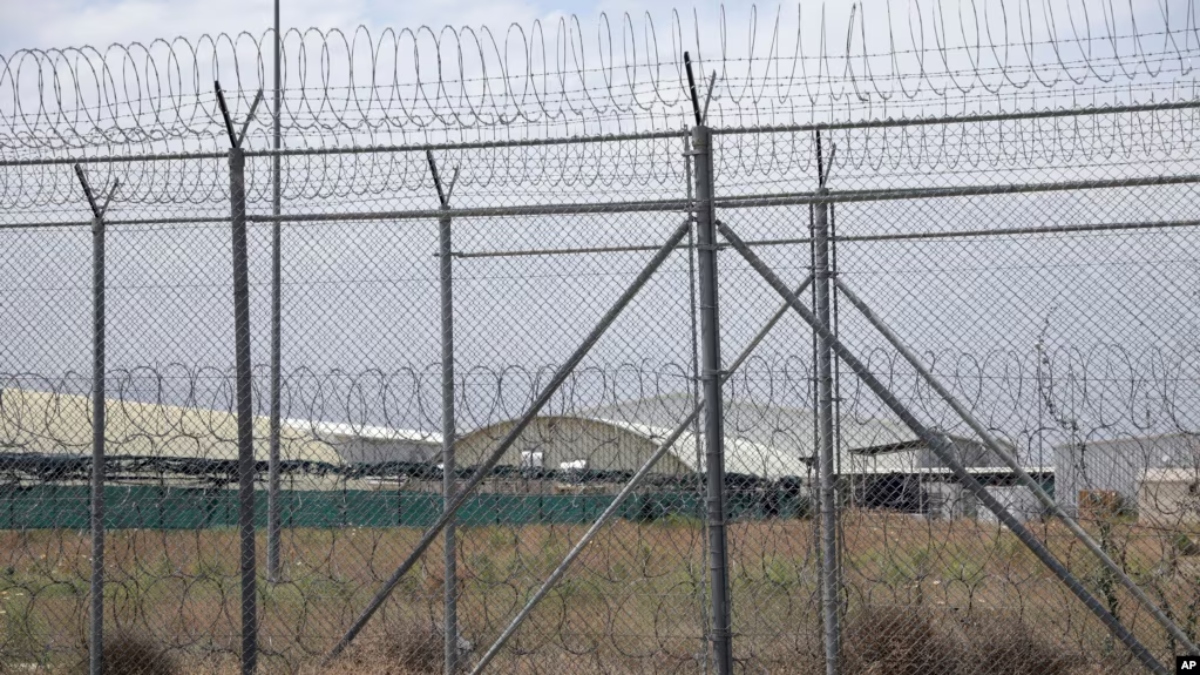While slamming his predecessor, Joe Biden, US President Donald Trump claimed that China “now occupies” the Bagram Airbase in Afghanistan, which was vacated by the American troops in 2021. The US had to leave its biggest airbase in the country in light of the Taliban reclaiming Kabul.
“…But we were going to keep Bagram, the big Air Force base, which is one hour away from where China makes its nuclear weapons. That’s what they do. They make their nuclear missiles and are one hour away from Bagram, and I said you can’t give up Bagram,” Trump said while addressing the 2025 National Day of Prayer at the White House Thursday.
“They gave up Bagram, and right now, China occupies Bagram. So sad, so crazy. One of the biggest air bases in the world, among the strongest and longest runways anywhere in the world, one hour away from where China makes its nuclear missiles,” he added.
The president blamed Biden and his administration for the Afghanistan debacle. “You wouldn’t have had the horror show at Afghanistan, which I think is what gave (Russian President Vladimir) Putin the resolve to go in and do what he did because he looked at how badly we got out,” Trump claimed.
“We lost 13 soldiers, and 42 were injured. Nobody ever talks about them, the legs, the arms, the arms, the face. Horribly injured, that would have never happened. Not even possible to have happened, and we would have been out before he was out,” he furthered.
Impact Shorts
More ShortsTrump made similar remarks in March this year, following which the Taliban issued a statement denying Chinese involvement. “Bagram is controlled by the Islamic Emirate (Taliban), not China. Chinese troops are not present here, nor do we have any such pact with any country,” it had said.
As Trump continues to lament about the airfield. Here are nine things you need to know about the Bagram Air Base.
9 things about Afghanistan’s Bagram airbase
Bagram Airfield is the largest air base in Afghanistan, which lies about 60 km north of Kabul in the Parwan province. In the past, experts called the province extremely strategic, claiming that the keys to controlling much of Afghanistan lie in Parwan.
Interestingly, the airbase was originally built by the Soviet Union in 1950 and the USSR had control over it during the early days of the Cold War. During the Soviet-Afghan War from 1979-89, Bagram served as a vital Soviet base. The base was eventually fortified and began housing military personnel from the USSR.
US first laid its eyes on the airfield in 1959, when then-US President Dwight Eisenhower conducted a landmark visit to Afghanistan and landed in Bagram.
After the Soviet withdrawal from Afghanistan in the 1990s, the Bagram air base was abandoned and became the frontline between the Taliban, who held Kabul to the south, and the Northern Alliance fighters based in mountain gorges to its north. The air base was heavily damaged during the conflict.
After the 9/11 terror attack in 2001, the US and its Western allies took over the Afghan airfield, and for the next two decades, they controlled the airbase in the name of America’s “war on terrorism”. Under US control, the base grew to over 77 sq km, with a new runway, medical facilities and fast food joints for US personnel.
There have been several reports that US soldiers also used the air base facilities to conduct abuse and torture of dissidents in the country.
In 2020, Trump’s first administration signed a deal with the Taliban in which they assured the pullout of all NATO troops from Afghanistan soil. With this deal, the Taliban used the next year to gain control over Afghanistan, with the US pulling out of the country.
The final American aircraft took off from the Kabul airport on August 30, 2021. US forces vacated Bagram on July 2, and the base formally fell into the hands of the Taliban on August 15.
While the base is under Taliban control today, the US has long raised concerns about China making inroads into Afghanistan after its exit. While most countries around the world were hesitant to recognise the Taliban rule, China gave the Taliban representative in Beijing ambassador credentials last year.


)

)
)
)
)
)
)
)
)



